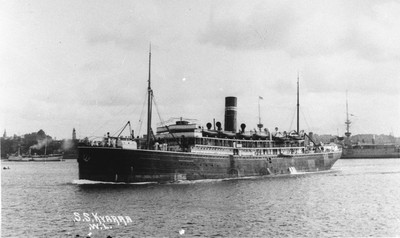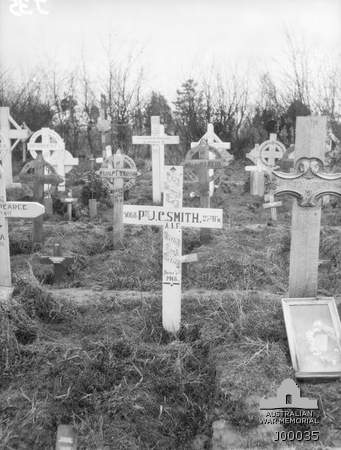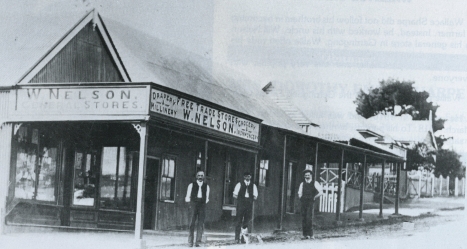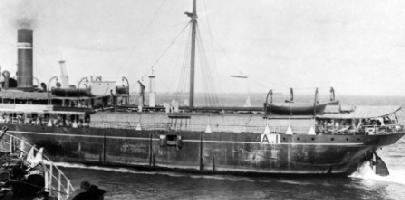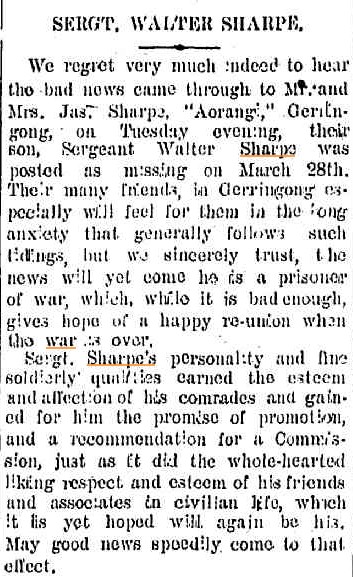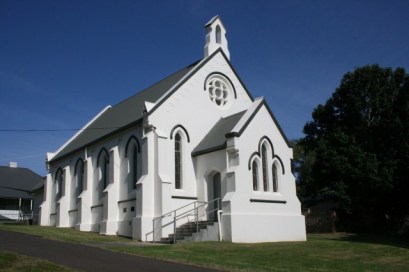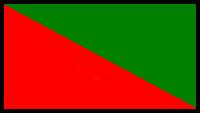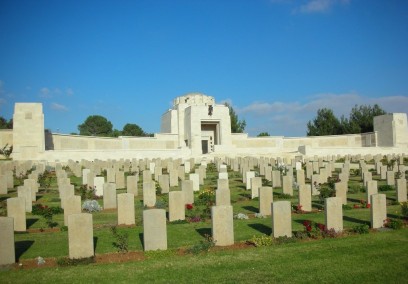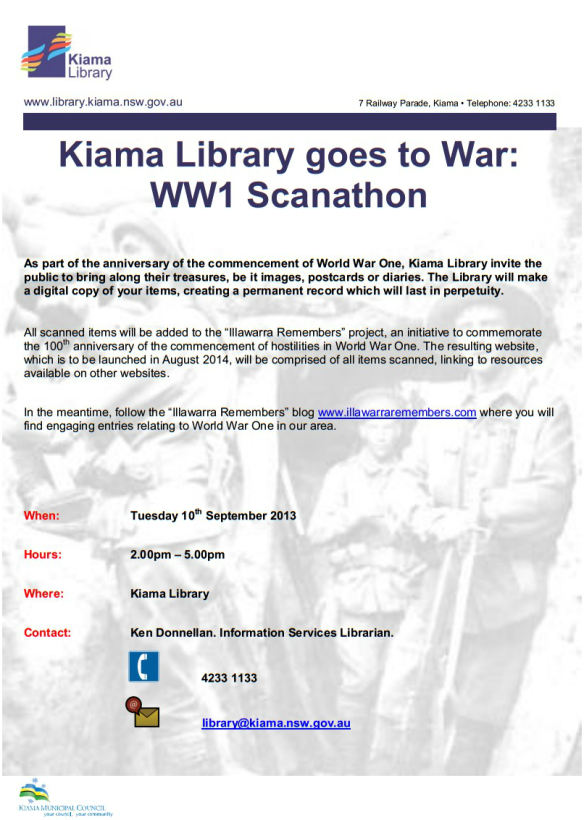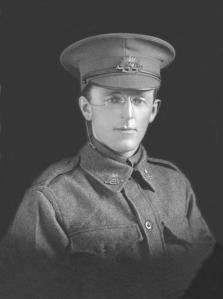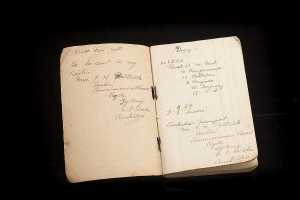Michael Molkentin spoke recently at Dapto library for the Illawarra Remembers 1914-1918 project.
He spoke briefly about his lastest book ‘Fire in the Sky’ and in greater detail about his most recent project. The newest subject is a volume on the Australian Flying Corp in WW 1 and it’s place not only in the Australian Imperial Force but within the total war effort.
If this new work, which is part of a five volume set from Oxford University Press, is on par with ‘Fire in the Sky,’ then we are all in for a treat.
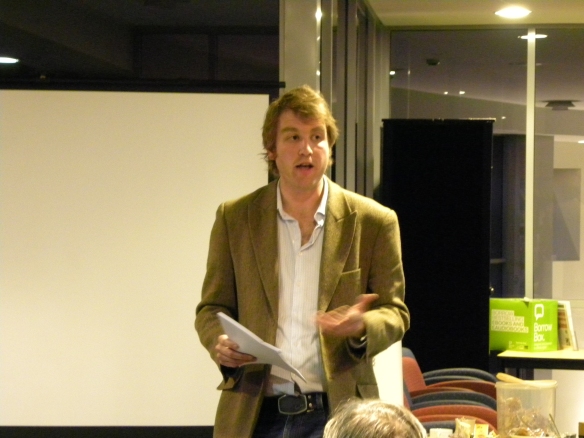 Keep your eyes posted for more speakers and events as part of the ‘Illawarra Remembers 1914-1918’ project.
Keep your eyes posted for more speakers and events as part of the ‘Illawarra Remembers 1914-1918’ project.
Monthly Archives: August 2013
Albert Parrish
A Gerringong farmer, Albert Parrish was born at Foxground, son of Thomas and Susanna.
Albert embarked at Brisbane on HMAT Kyarra on 3rd January 1916, with the 8th Reinforcement of the 25th Battalion AIF, joining the Pioneers in Egypt.
Albert was killed in action on 27th May 1918 at Pont Noyelle by a bursting shell. According to Lieut.Grove of the Australian Pioneers:
He worked at the Q.M.’s store. His brother was killed at Westhoek
Ridge, Ypres, last year, and I was with his brother too when he was
killed. A.Parrish was good looking, about 5 ft 10, clean shaven, and
very quiet. I was about ¼ mile away from him at the time, and didn’t
see him killed. He was killed by an aeroplane bomb while looking
after the store on the Main Albert-Amiens Road. He was killed
instantly.
And this account from Cpl. Smith of the 2nd Australian Pioneers:
He was killed instantly by a shell in the evening just before
dark. He was buried at Franvillers by the Padre, and a proper
cross was put up. I took his job over after he was hit. Jerry
was shelling, and instead of staying in the dug-out he went
into a field and was hit there. Two or three others were killed
with him.
Albert’s younger brother Thomas Lindsay Parrish was killed earlier in 1917. Both Parrish boys attained the rank of Lance Corporal.
The grave of 5068 Private (Pte) John Cook Smith of Darling River, NSW, 27th Battalion, killed in action (KIA) 7 June 1918, in Franvillers Cemetery. Left to right is the grave of 3862 Pte Horace Pearce of Richmond, NSW, 20th Battalion, KIA 5 June 1918; 4851A Corporal Gerald Saville Maxwell of Bendigo, Vic, 28th Battalion, KIA 1 June 1918; 1942 Sapper Frederick Lawrence Green of Kyneton, Vic, 7th Field Company Australian Engineers, KIA 27 May 1918 (deceased’s uncle and four cousins were killed in action); 6176 Pte Frederick William Masson (Frederick William Deakin Masson) of Northam, WA, 28th Battalion, KIA 1 June 1918; 3608 Lance Corporal (L Cpl) Albert Parrish of Gerringong, NSW, 2nd Australian Pioneers, KIA 27 May 1918 (brother of 3607 L Cpl Thomas Lindsay Parrish, 2nd Australian Pioneers, who died of wounds 25 September 1917); 6649 (Roll of Honour shows 6640) Pte John Reid, enlisted Claremont, WA, 28th Battalion, KIA 1 June 1918. This image is one of a set of photographs of the original graves of some members of the 27th Battalion. The Battalion funded the purchase of the camera through its adjutant Captain (Capt) Southon for 5541 Pte G R Barrington to photograph the graves. The camera and negatives were then acquired by Major John L Treloar on behalf of the Australian War Museum, reimbursing costs for the camera to Capt Southon.
WARATAH FLAG
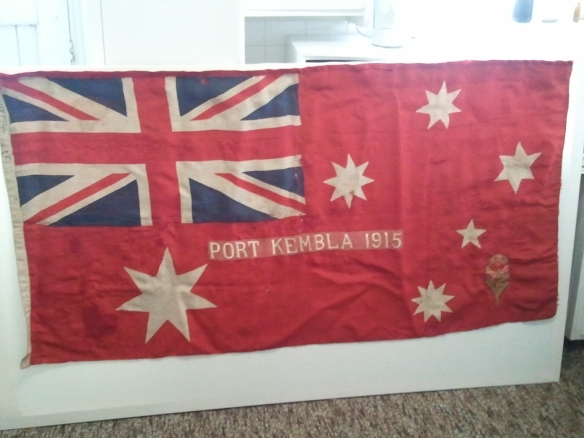
In December 1915 the famous Waratah March passed through the town of Port Kembla.
At the head of the march was carried a Red Ensign flag. This flag had been embroidered with the words ‘PORT KEMBLA 1915’, and in the lower right corner was a hand embroidered waratah flower. This work was done by the ladies of Port Kembla’s Warrington family.
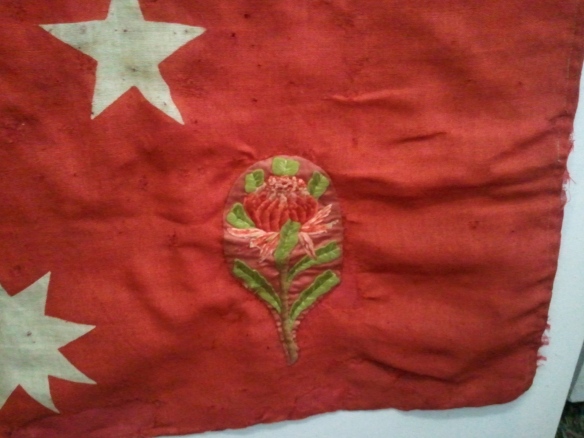
This flag was handed back to the family in May 1916 and has remained in their care ever since.
Today the flag is held at the Breakwater Battery Battery Museum at Port Kembla where it is under going some intensive conservation work.
Unfortunately the flag is not on public display, but the museum has many other very good exhibits. They are open every 2nd and 4th Sunday from 10am to 2pm.
This flag not only represents the men and women from the town of Port Kembla, but is a reminder that it was ordinary people who put themselves in harms way for our peace and prosperity.
It now is one of the most important physical piece’s of memorabilia not only in the Illawarra but in Australia.
Sergeant Wallace John Sharpe of Gerringong
Wallace Sharpe did not follow the family tradition of farming. Instead, he worked with his Uncle, Will Nelson in his Gerringong general store. Often riding his horse to outlying parts of the district, Wallace was very popular and likeable, of good moral character, and fine manly qualities. He also played tennis with the Gerringong Tennis Club.
Enlisting on 29th July, 1915, Wally, as he was affectionately called, joined the 6th Light Horse Regiment, 16th Reinforcement, embarking from Sydney on 3rd May 1916 on HMAT Hymettus, leaving his home, “Aorangi” in Gerringong forever.
The First Battle of Amman aimed at cutting the Hejaz railway line running south from Damascus. The operation began on 22 March 1918 with the building of bridges across the River Jordan. Rain made going extremely difficult, but by the evening of the 25th, the village of Es Salt had been taken. On the morning of the 27th, the attack began on Amman. About 3,000 Allied soldiers faced 4,000 Turks in well prepared positions, supported by machine-guns and fifteen artillery pieces.
The Turkish resistance, bolstered by the German Asia Corps, proved impossible to overcome. By 2nd April, the Allies had withdrawn. The venture had cost 118 killed and 55 missing from the Mounted Division. (Ency. Of Australia’s Battles. Coulthard-Clark)
According to the Red Cross wounded and missing report:
“Informant states that on the 28/3/18, the Regiment was in action against
the Turks at Annam east of the River Jordan in Palestine. During the advance,
Sharpe was hit by machine gun fire, together with two or three others.
Informant was about 50 yards away, and saw all the men hit, lying on the
ground. He recognised Sharpe who was still alive.”
“I knew Sergeant Sharpe by sight. He was a tall man standing about 6ft. of
big build, dark, clean shaved. He went out with Liet. Ridgway’s party, when
they made an unsuccessful attack on Aman. We were in support; Ringrose
was the only man of the party who returned. He reported that everyone
of them had been hit. This was on the 28th March, 1918. Another attack was
made on Amman 6 months after this and the place was taken. Some of us
went out to see the place where Liet. Ridgeway’s party had been attacked.
The dead bodies were lying there just as they had fallen, and we buried
them. Sharpe was identified by some of the men. Sharpe was one of the
most popular men in the Regiment – He was a great leader of men.”
Back on the home front, for nearly a year the family lived in anxiety and suspense, not knowing whether 27 year old Wallace was alive or dead. Finally they received the bad news – previously he was reported missing.
Wallace was a general favourite with his comrades who found him gallant and brave, kindly, loyal and considerate.
The memorial Service to Sergeant Sharpe was conducted by the Rev. W.T. Hooker in the Gerringong Congregational Church. The rostrum was draped with the Union Jack and Australian flag. In the centre was placed a large wreath of white flowers with streamers of Sergt. Sharpe’s Battalion colours (red and green). The whole service was uplifting, a note of triumph ran through it all, in prayers, readings, anthems, hymns and address from Romans 14:7-8.
Wallace has a memorial inside the Gerringong Uniting Church and a plaque at the Jerusalem Memorial. Panel 58.
Kiama Library goes to War: WW1 Scanathon.
Image
Augustus Milton East
Augustus (Gus) Milton East was born in 1893, the son of Alfred and Katie East of Shellharbour. During WWI he joined the 18th Battalion AIF to serve overseas. He was killed in action in France on the 19th May 1918 aged 25yrs.
Tongarra Museum holds a collection of significant items relating to Gus; the legacy he left behind includes war diaries, letters, mementos from overseas and a souvenir ‘wartime’ scarf bought for his sister Marjorie. These precious objects describe Augustus’ experience at war and the way in which his family dealt with his death.
What is particularly of note is the concern from Augustus for his family in Australia while he was fighting at war. His thoughts were always with his family and home, even as he was enduring the horrors of war.
One of the letters Gus wrote was to the James girls of Dunmore (see previous post).
These items were treasured by his family after his death and are now treasured by the museum and local community. They were donated to the museum by Gus’ niece.
Augustus Milton East 1893 – 1918
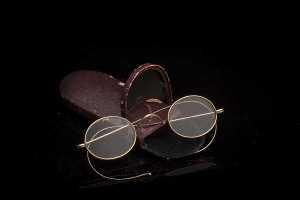 Glasses worn by Augustus Milton East during World War One
Glasses worn by Augustus Milton East during World War One
Augustus Milton East’s war diary

